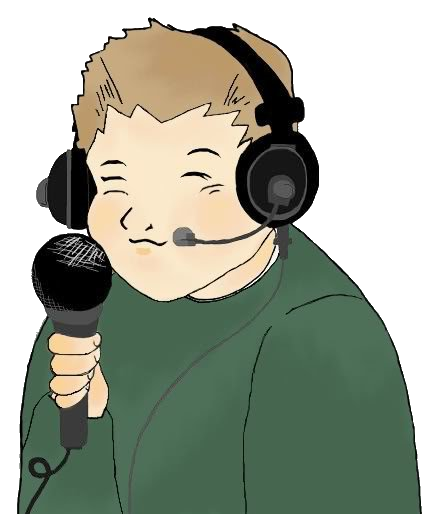 |
 |
 |
 |
 |
 |
#124 - The $1,000,000 Chance Of A
Lifetime Board Game
Not even Jim Lange could make this game
playable.
Board Game Released by Cardinal
Industries (1986)
Text by: Robert Seidelman
There are certain types of games that translate well to home game use and those that don't. The simplest of games do so very well. Games like Jeopardy, Concentration, Password, Family Feud all had a long running batch of home games because they stayed true to the format of the shows and they were fun to play. Other games got released that tried their best to stay true, but ended up not working at all, such as the Fun House home game, the first High Rollers board game (not the superior Wink Martindale board game) and Hollywood Squares. There are others that didn't even stay true to the show and just made a fun silly game out of it; basically any of the Chuck Barris based board games would fit this category. But there are some that stay true and just fail at every single hurdle. One of those, is the $1,000,000 Chance of a Lifetime game.
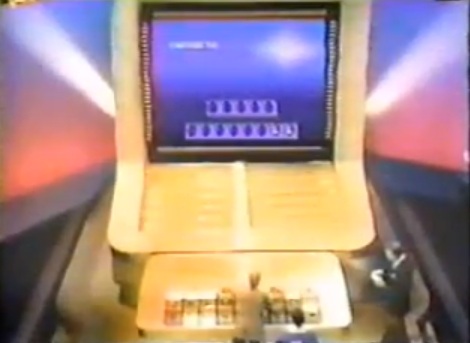
The show itself was massive in quite a few ways. First, the keyboard itself was huge and was a massive drawing point to the show, same can be said about the big monitor. I don't know how the monitor looked inside the studio, but from what we got at home, it looked very impressive for its time. Secondly, it was hosted by a massively good host in Jim Lange. Sure he gets a bad rap at times, but he's a serviceable host. When you see him do this show, he really roots for all the teams to do well and especially at the end game because.....
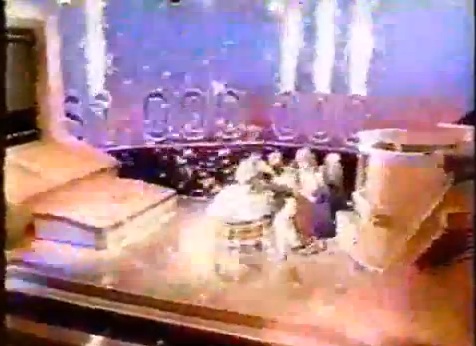
thirdly, it was the only game show at that time to regularly attempt to give away $1,000,000. And when the contestants did win the big money, it was a gigantic celebration with Jim yelling, "YOU WON A MILLION DOLLARS!!!!!!!!" Quite a far departure from what we got with certain lottery hosts in the late 90s and even from other hosts in the primetime boom of the early 2000s and even in 2007-2008 with the big Writers Guild of America strike. In short, it was a big hit in 1986, when other shows such as Break the Bank, Tic Tac Dough, The Joker's Wild and even a very solid show in Sale of the Century were floundering in syndication. This show even beat Wheel Of Fortune for a few weeks. So, how do you take something that massive and cram it into a box to play at home?
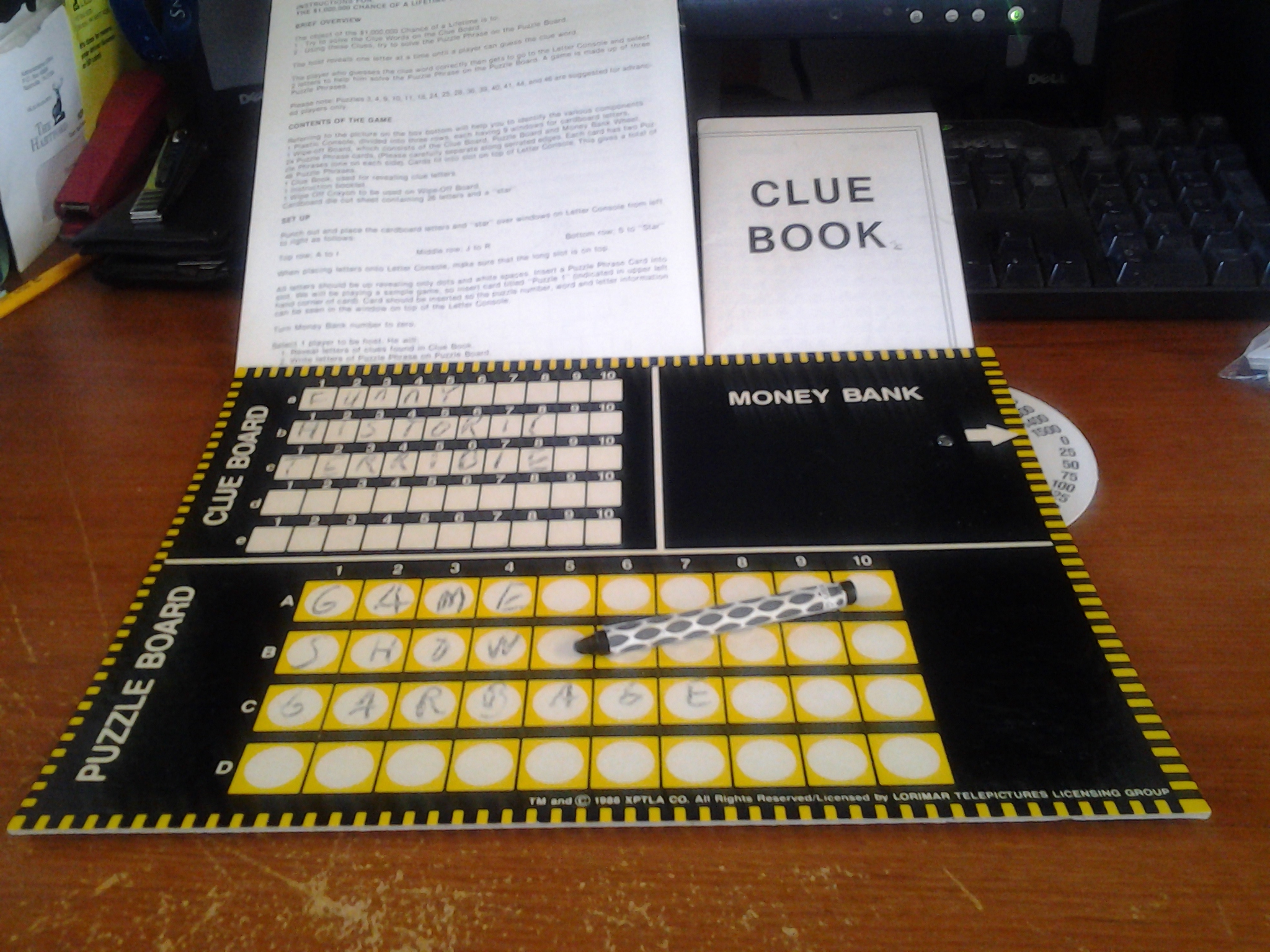
Well, for starters you don't retain any of the elements that make the game popular. There's no gigantic keyboard, there's no isolation booth and there isn't even a $1,000,000 thing to give away. What we have here is a rectangle board with a bunch of blanks on it to fill up, a black crayon to mark it with, the instruction book, and this.
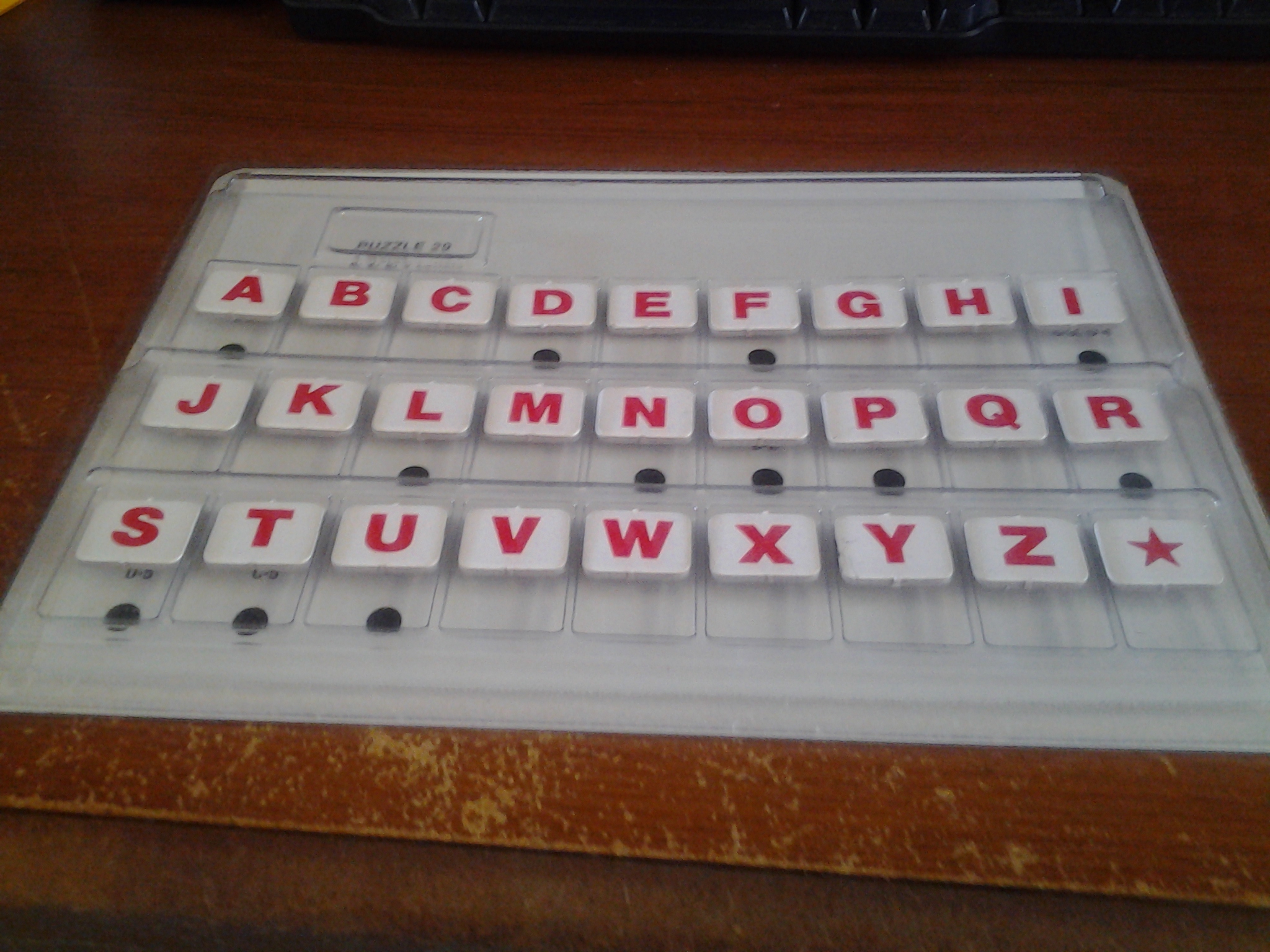
This was supposed to be the keyboard looking device. What irks me about this was how cheap it was. On the back of the box it had it as one solid device, kind of like the puzzle board for Wheel of Fortune. But here, it's 27 separate pieces you have to keep track of. Lose 1 and you won't be playing this game at anytime, because the people playing will know where certain letters are.
Here's the game play. The "Host" will start filling letters on one of the rows of blanks up on top. After a player guesses it right, they pick two letters to place. The rest is played like the actual show. While it is faithful to the show, the game itself isn't that good at all.
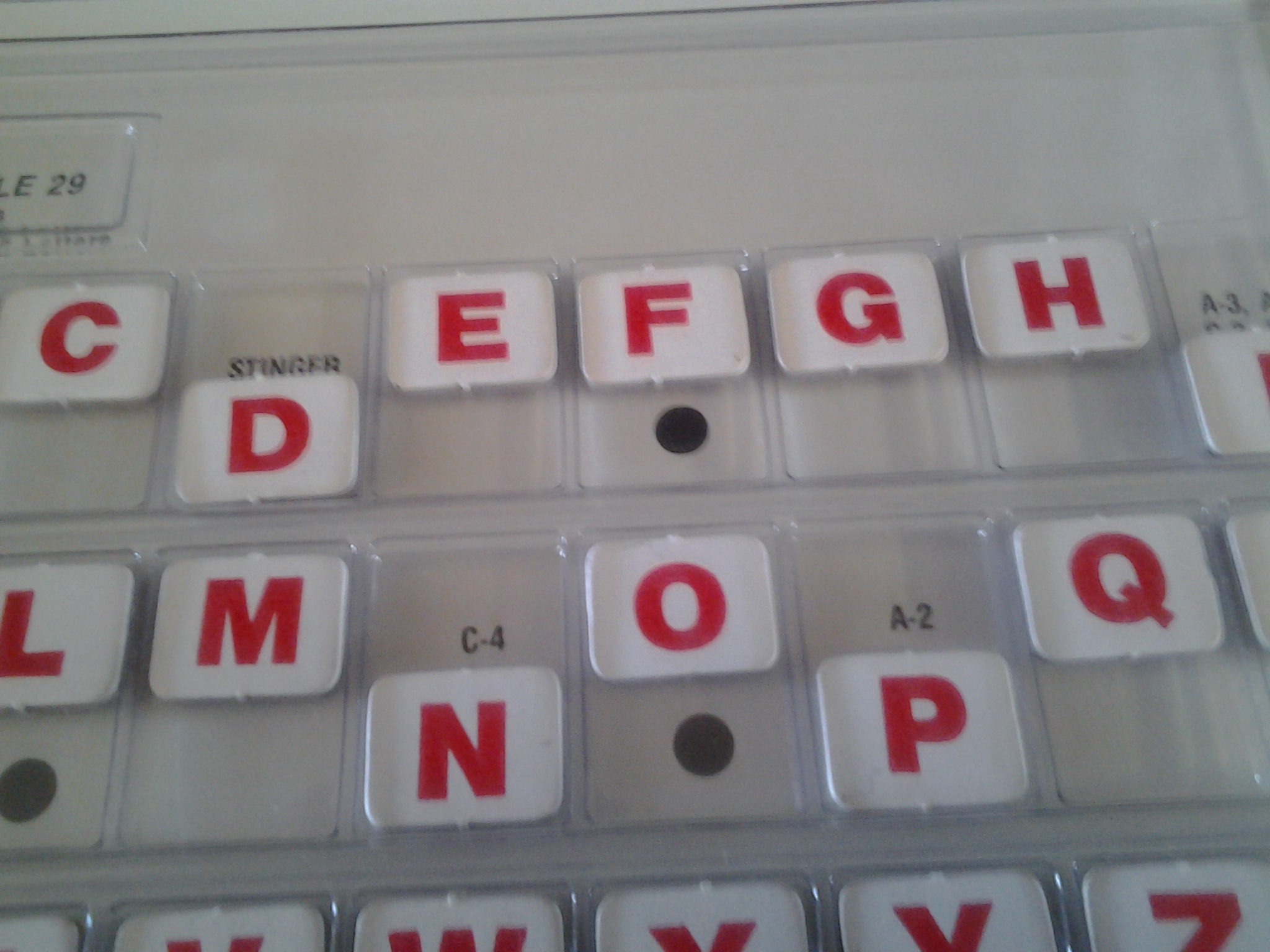
The kicker though is this. When you want to pick a letter, you pull the tab down and you're left with either a combination of rows and numbers to write the letters or a bland small STINGER. It wasn't as epic as the STINGER from the actual show, and you don't feel just as disappointed when it shows up. The amount of rounds played is 3. Whoever has the most money at the ends win, but if you win all 3 rounds, you win the $1,000,000. It makes the game a waste when one person wins 1 round and the other wins the second round. Making the third one worthless for the Million. It's a lame attempt.
The final problem I have with this game is the number of puzzles. Regular games of Wheel of Fortune at the time, not counting the Deluxe version, had 90 puzzles for 3 rounds. Allowing without repeats 30 games possible. For the $1,000,000 Chance of a Lifetime game, it's only 48 puzzles, meaning you can only play 16 games without repeating. People paid about $20 for this game when it first came out on stores, and I bet they were severely ripped off and disappointed. The only good thing to come out of the board game was that it came with an actual application to possibly get on the show. I give them credit for doing that, but that's where the kindness ends.
In short, it was just a lame cash-in from the same company that made the even lamer Finders Keepers game. What could have been a good game, turned out to be cheap and not worth the $20. Since the game was so technical, this would have made for a good early PC game. More puzzles could have been put in the game, and also added the epic bonus game. That would have been worth the $20-30 for the game instead of what we did get for the board game.
Have any questions about the site? Submit them to us via our Facebook page, our Twitter, and through e-mail. We'll be sure to answer them to the very best of our ability.
(c) 2009-2017 - A CQS Production.
